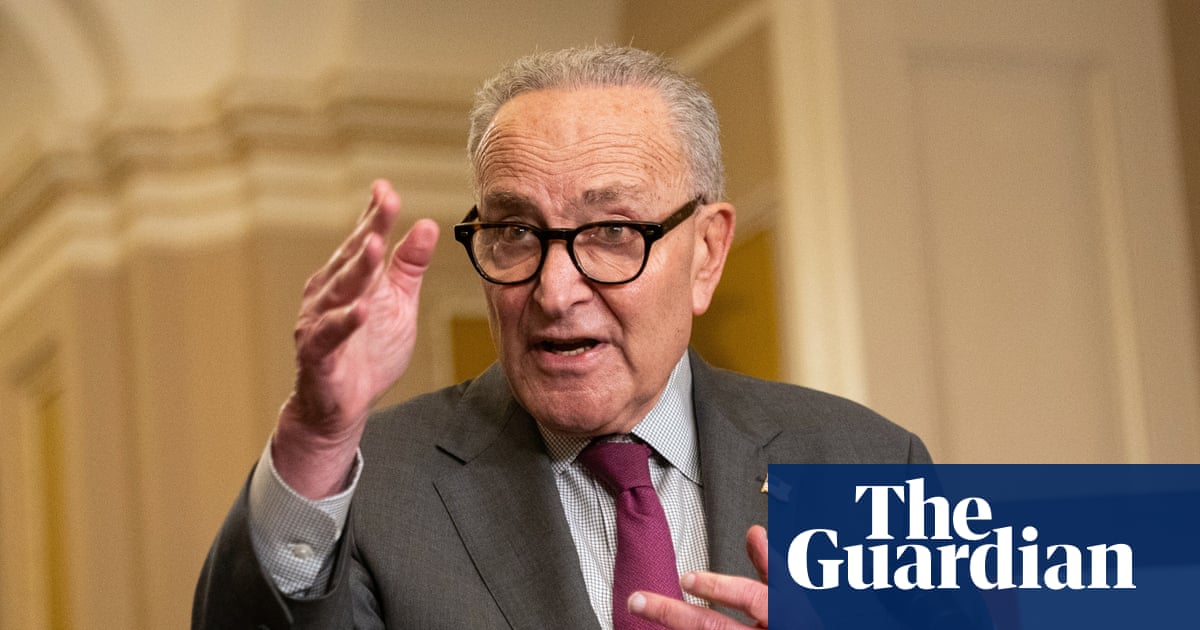Donald Trump observed blithely last week that if his cherished tariff regime is struck down by the US supreme court, he may need to “unwind” some of the trade deals struck since he declared “liberation day” in April.
It was a reminder, as if it were needed, that nothing about Trump’s economic policy is set in stone. Not only does the ageing president alter his demands on a whim, but it is unclear to what extent he has the power to make them stick.
Yet even if the “reciprocal” tariffs first announced on 2 April are rolled back, they are only one aspect of a much wider assault on the last vestiges of what was once known as the “Washington consensus”.
To name just a few of Trump’s recent interventions, he has taken a 10% government stake in the US tech company Intel, demanded 15% of the revenue of Nvidia’s chip sales to China and suggested the chief executive of Goldman Sachs should go.
This at the same as taking a sledgehammer to Federal Reserve independence by lobbing insults at the chair, Jerome Powell, and trying to sack Lisa Cook from the central bank’s board.
The head of the Bureau of Labor Statistics was removed by Trump after a run of poor jobs data; the chief of the National Labor Relations Board, Jennifer Abruzzo, was fired, too.
The tech bros who back Trump loathe the NLRB for its role in upholding workers’ rights – mandating unionisation ballots at Amazon warehouses, for example.
Trump’s approach is simultaneously systematic, in its determination to smash existing norms, and utterly chaotic. It is hard to categorise: corporate America is being unleashed – through the wilful destruction of environmental and labour standards, for example – and brought to heel.
The leftwing Democratic party senator Bernie Sanders welcomed Trump’s efforts to take a stake in Intel in exchange for government grants, for example – something he advocated in the Guardian back in 2022 – while some Republicans have condemned the approach as (heaven forbid) “socialism”.
Partly because it coincides with the AI-fuelled stock boom that has propelled the value of tech companies into the stratosphere, the market response to this torching of the status quo has so far been modest.
Whatever emerges from another three and a half years of this maelstrom is likely to be unrecognisable as the US economic model of recent decades.
Its destruction has not happened overnight. The days were already long gone when the US, as the world’s undisputed economic superpower, could export free market, financialised capitalism worldwide.
After the 2008 crash, the conditions for which were created in Wall Street boardrooms, any moral or practical claim the US had to offer an economic example to other nations evaporated.
As the turmoil rippled out through the global economy, and the US government responded by bailing out large chunks of its financial sector, the lie of laissez-faire was laid bare.
The crisis exposed the risks of turbocharged capitalism to countries outside the US, too – not least in the former Soviet bloc – that had been advised to adopt the model wholesale.
As Ivan Krastev and Stephen Holmes put it in their compelling polemic The Light that Failed, “confidence that the political economy of the west was a model for the future of mankind had been linked to the belief that western elites knew what they were doing. Suddenly it was obvious that they didn’t.”
after newsletter promotion
Back home in the US, meanwhile – as in the UK – the perception that banks had been bailed out, while the galaxy brains behind the crisis got off scot-free, sowed the seeds of a corrosive sense of injustice.
Similarly, even before the crash, the idea that ever-expanding free trade brings economic benefits was bumping up against the fact that even if that is true in aggregate, for workers across the US rust belt, just as in the UK’s former manufacturing heartlands, it brought deindustrialisation and unemployment.
This was fertile ground for Trump’s populist economic message. His first-term China tariffs were, with hindsight, a relatively modest stab at, as he saw it, tilting the playing field back towards the US.
Joe Biden did not unwind those tariffs, which went with the grain of geopolitics, as any hopes that economic liberalisation would bring China into the fold of democracies were sadly dashed, and President Xi’s regime took on an increasingly authoritarian bent.
Biden also took a muscular approach to the state’s role in the economy, with the billions in grants and loans distributed under the Inflation Reduction Act linked to national priorities of cutting carbon emissions and creating jobs.
So the idea that before Trump arrived on the scene, free market US capitalism was motoring along unchallenged is misleading, but the pace at which he is crushing its remaining norms is extraordinary.
There is ample ground for legitimate disagreement here: taxpayer stakes in strategic companies are much more common in European economies, for example. Trump may be laying down tracks that future US governments with different priorities could follow.
Given that it is so unclear even what kind of economy he is groping towards, the overriding sense for the moment is of radical uncertainty. Friday’s weak US payrolls data, with the unemployment rate close to a four-year high, suggested companies may be responding with caution.
Investors appear to have decided to avert their eyes for now, buoyed up by the prospect of Fed rate cuts, and the mega returns of the tech companies. However, with every chaotic week that passes, the risks must increase – and as the UK has learned in the wake of the Liz Truss debacle, economic credibility is quicker to lose than to rebuild.

 German (DE)
German (DE)  English (US)
English (US)  Spanish (ES)
Spanish (ES)  French (FR)
French (FR)  Hindi (IN)
Hindi (IN)  Italian (IT)
Italian (IT)  Russian (RU)
Russian (RU)  1 month ago
1 month ago
























Comments